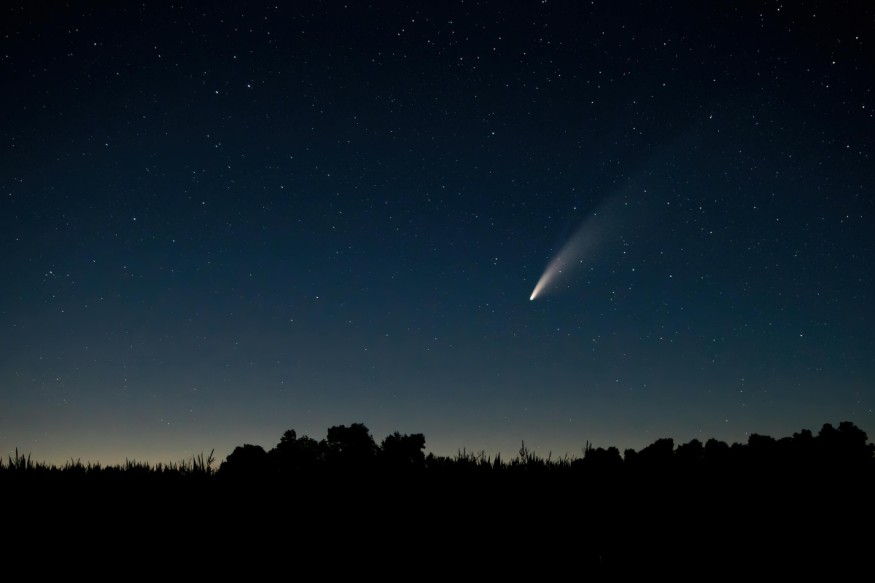
In the cosmic theatre of 2025, the interstellar comet 3I/ATLAS races towards perihelion on 30 October, sparking a TikTok frenzy where users proclaim shaky handheld videos as irrefutable proof of an alien spacecraft invading Earth's skies.
Amid surging hashtags like #3IATLAS, #InterstellarComet, and #AlienSpacecraft, viral clips allege captured glimpses of the object, blending Avi Loeb's daring hypotheses with unverified footage that captivates millions overnight.
Yet, as NASA and ESA telescopes unveil layers of ice and dust, this digital delirium confronts a grounded reality: a natural wanderer from beyond our solar system, not extraterrestrial engineering, though its quirks fuel endless debate.
Viral TikTok claims ignite speculation
TikTok's algorithm propelled 3I/ATLAS into viral stardom in late September 2025, with creators uploading grainy night-sky recordings purporting to show the interstellar comet as a hulking alien vessel pulsing with unnatural lights.
One clip, viewed over 5 million times, declares 'leaked actual footage shows large vessel and NASA activated planetary defense network', linking blurry silhouettes to supposed interstellar object escorts. Users dissect anomalies—erratic glimmers dismissed by skeptics as lens flares or aircraft—while echoing past interstellar comet mysteries like ʻOumuamua's cigar shape.
This TikTok viral wave, amplified by #Perihelion2025 and #CometDebunk trends, draws conspiracy circles alleging government suppression, with comments flooding: 'Why hide the truth if it's just ice?'
@newsnationnow Harvard astrophysicist Avi Loeb is urging NASA to release high-resolution images of 3I/ATLAS. “The politics of the day should not sabotage science. They have the data. They should share it with scientists,” Loeb said. MORE: https://www.newsnationnow.com/vargasreports/
♬ original sound - NewsNation - NewsNation
Amateur enthusiasts mobilise backyard telescopes, sharing counter-videos that reveal atmospheric distortion, yet the hype persists, turning astronomical curiosity into a social media spectacle that blurs fact from fiction across global feeds.
@fernandoac4 3i/Atlas - imagens hoje 30/10/2025 inéditas #3iatlas #viral #viralizou #viralvideos #LIVEIncentiveProgram
♬ som original - Fernando alves
Scientific discovery and key observations
Astronomers first spotted 3I/ATLAS on 1 July 2025 via the ATLAS telescope in Río Hurtado, Chile, its hyperbolic trajectory instantly flagging an extrasolar origin—the third confirmed interstellar object after 1I/ʻOumuamua and 2I/Borisov.
Pre-discovery images from June 2025 archives extended tracking, revealing a nucleus diameter between 440 metres and 5.6 kilometres, encased in a teardrop-shaped dust cocoon imaged by Hubble on 21 July.
The James Webb Space Telescope probed its coma on 6 August, detecting carbon dioxide (87 per cent), carbon monoxide (9 per cent), and water (4 per cent) in the gas plume, hallmarks of solar heating.
ESA's Mars Express and ExoMars Trace Gas Orbiter scrutinised it from 30 million kilometres on 3 October, while Juice prepares November flyby attempts, capturing spectra of ancient ices from billions of years adrift at 210,000 km/h. These observations, from Hubble images to Webb data, affirm a pristine comet unmarred by human interference, offering clues to distant planetary nurseries.
Avi Loeb's intrigue meets expert rebuttal
Harvard's Avi Loeb elevates 3I/ATLAS to a 4/10 on his technological origin scale, pinpointing eight anomalies: nickel-dominant emissions without iron, a non-illusory sunward jet, and trajectory fine-tuned near Mars, Venus, and Jupiter with 0.005 per cent odds.
'If it is a natural comet... its heating by 770 watts per square meter may break it up,' Loeb posits, urging perihelion scrutiny for potential manoeuvres or mini-probes amid the 29 October closest solar approach.
Yet, astronomers counter decisively: 'It has a coma, an envelope of vaporised ices, surrounding it. It has a glittering tail,' rendering spacecraft camouflage implausible, with its path explicable as icy ejection physics. IFLScience highlights a peculiar 594-kilometre feature via Keck Observatory, but insists on comet authenticity, dismissing metals as routine in solar system ices.
Odd 594-Kilometer Feature Found On Interstellar Object 3I/ATLAS https://t.co/Y1f8FYWEIR
— IFLScience (@IFLScience) October 19, 2025
This clash—Loeb's bold 'Nature is more imaginative than... science fiction' versus empirical dismissal—encapsulates the tension between hypothesis and Hubble-verified reality.
Originally published on IBTimes UK
© Copyright IBTimes 2025. All rights reserved.











